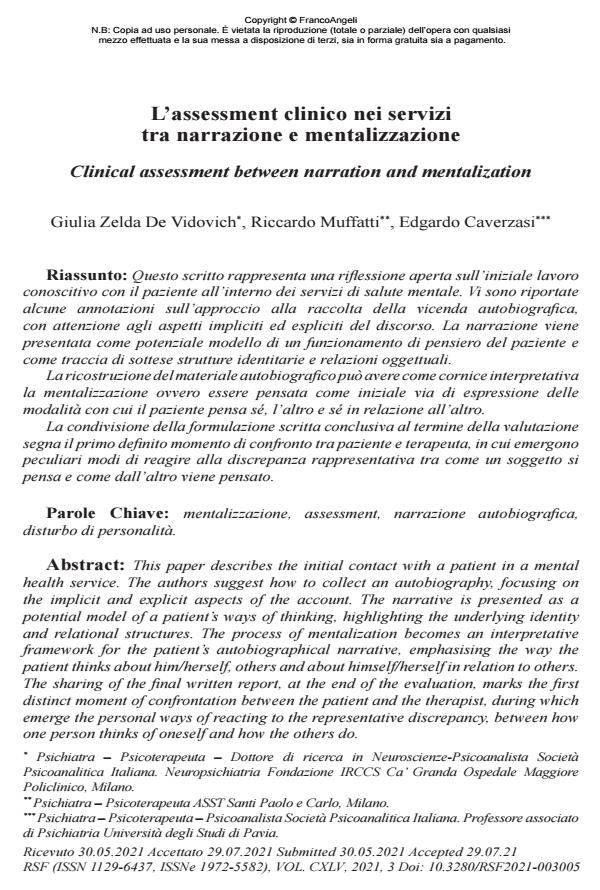Clinical assessment between narration and mentalization
Journal title RIVISTA SPERIMENTALE DI FRENIATRIA
Author/s Giulia Zelda De Vidovich, Riccardo Muffatti, Edgardo Caverzasi
Publishing Year 2021 Issue 2021/3
Language Italian Pages 9 P. 69-77 File size 133 KB
DOI 10.3280/RSF2021-003005
DOI is like a bar code for intellectual property: to have more infomation
click here
Below, you can see the article first page
If you want to buy this article in PDF format, you can do it, following the instructions to buy download credits

FrancoAngeli is member of Publishers International Linking Association, Inc (PILA), a not-for-profit association which run the CrossRef service enabling links to and from online scholarly content.
This paper describes the initial contact with a patient in a mental health service. The authors suggest how to collect an autobiography, focusing on the implicit and explicit aspects of the account. The narrative is presented as a potential model of a patient’s ways of thinking, highlighting the underlying identity and relational structures. The process of mentalization becomes an interpretative framework for the patient’s autobiographical narrative, emphasising the way the patient thinks about him/herself, others and about himself/herself in relation to others. The sharing of the final written report, at the end of the evaluation, marks the first distinct moment of confrontation between the patient and the therapist, during which emerge the personal ways of reacting to the representative discrepancy, between how one person thinks of oneself and how the others do.
Keywords: mentalization, assessment, autobiographical narration, personality disorders.
Giulia Zelda De Vidovich, Riccardo Muffatti, Edgardo Caverzasi, L’assessment clinico nei servizi tra narrazione e mentalizzazione in "RIVISTA SPERIMENTALE DI FRENIATRIA" 3/2021, pp 69-77, DOI: 10.3280/RSF2021-003005